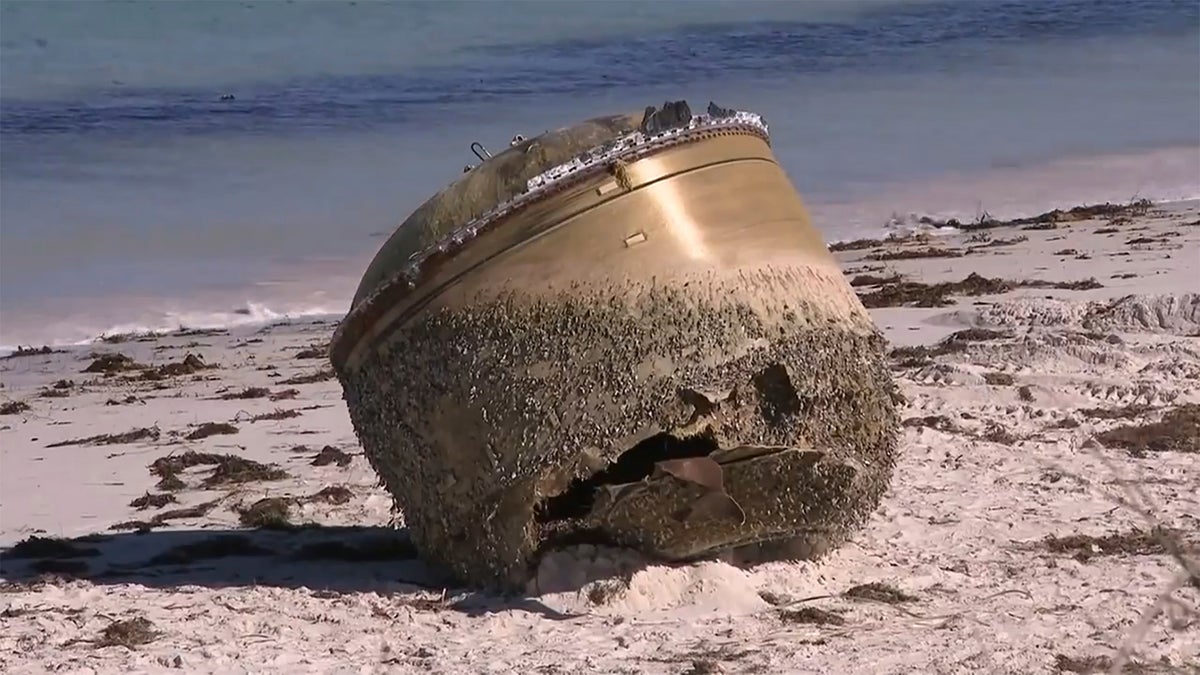
A large chunk of debris from space has been identified after it washed up on a remote West Australian beach.
Police cordoned off the object after it was found in July on a beach near Green Head, about 250km north of Perth.
The large cylinder, which was about 2.5m high and partly made of a gold-coloured woven material, raised theories that it could have been part of a downed airliner.
But police also urged people to refrain from drawing conclusions after several rumours linked it to UFOs while others linked it to the missing Malaysian MH370 flight.
After a two week investigation, the Australian Space Agency said the debris is most likely from a Polar Satellite Launch Vehicle operated by the Indian Space Research Organisation.
“We have concluded the object … is most likely debris from an expended third-stage of a Polar Satellite Launch Vehicle (PSLV),” said ASA on their official Twitter profile.
“The PSLV is a medium-lift launch vehicle operated by the Indian Space Research Organisation.”
Earlier this month, European Space Agency engineer Andrea Boyd said her colleagues believed the item that washed up from the Indian Ocean fell from an Indian rocket while launching a satellite.
“We’re pretty sure, based on the shape and the size, it is an upper-stage engine from an Indian rocket that’s used for a lot of different missions,” she told Australian Broadcasting Corp.
Meanwhile, Indian Space Research Organisation chair S Somnath told the BBC the debris was indeed a part of a rocket but could not confirm if it was from their launch.
Whoever launched the object into space would be responsible for its disposal.
The mysterious giant cylinder washed up on an Australian beach— (screengrab/7News)
“There is a United Nations Office for Outer Space Affairs, and they have an outer space treaty that everyone has signed saying that whoever launches something into space is responsible for it right until the very end,” Boyd said.
Authorities initially treated the device as hazardous and urged the public to stay away but Western Australia Police later said in a statement that a government chemical analysis had determined the object was safe and “there is no current risk to the community.”
Police said the device would be removed following formal identification of its origin.
“Police will maintain security of the object until it is removed and members of the public are requested to stay away from the location,” the statement said.
Western Australia Premier Roger Cook said the debris could be displayed in a local museum alongside the wreckage of Skylab that fell back to Earth in 1979 in Australia.
Skylab was the USA’s first space station launched by NASA. It orbited unmanned for about five years before breaking up and scattering debris across the Esperance region.







